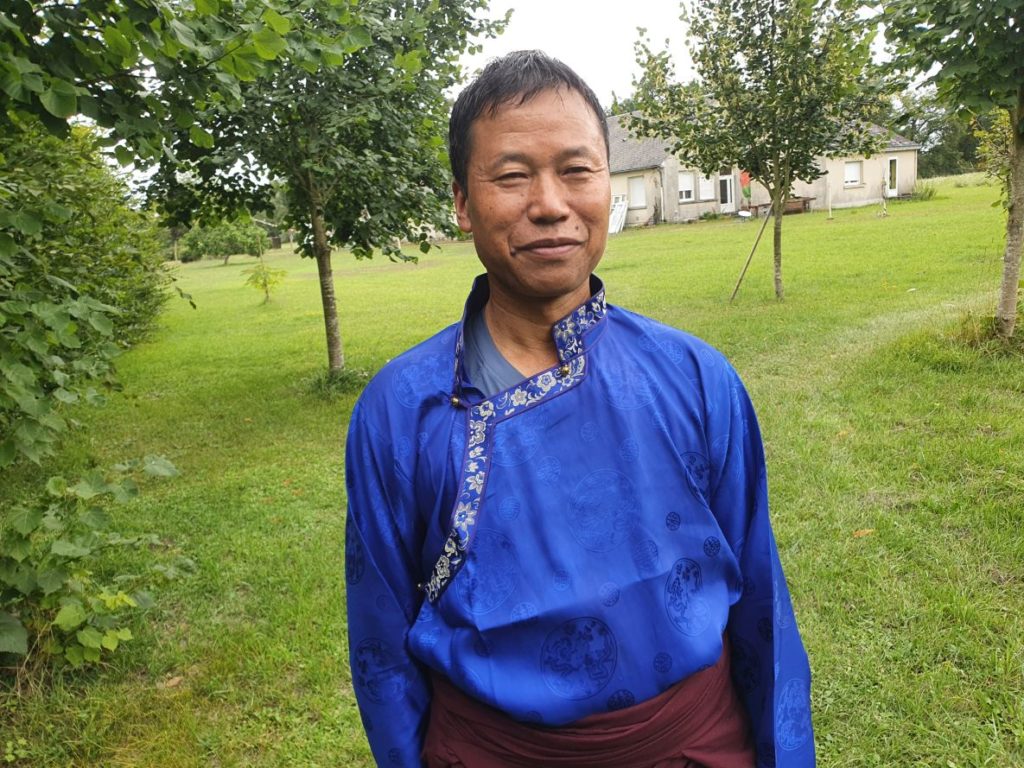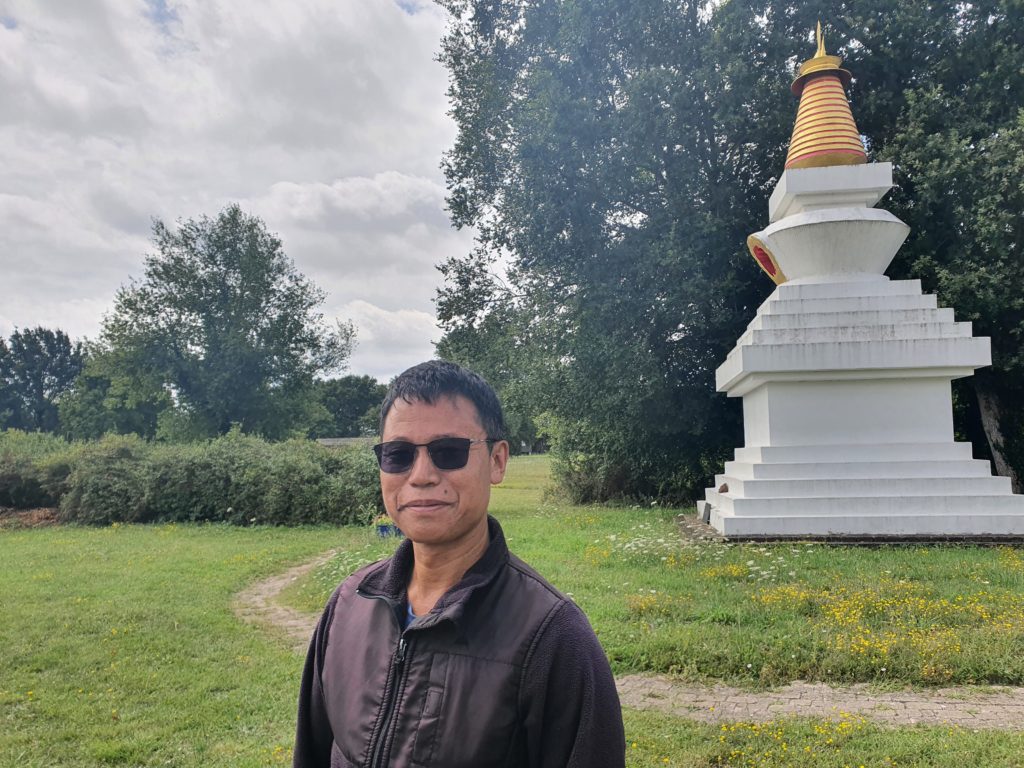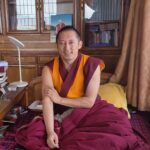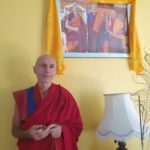Amchi Nyima Gurung is a menrampa, a doctor of the Tibetan science of healing, sowa rigpa. He has been coming to Shenten for many years, practising kunye, Tibetan massage and giving medical consultations. Besides that, he teaches foundations of the massage, holding a workshop about it every summer.
Amchi la, when did you come to Shenten for the first time?
It was in 2009. I returned to France in 2012 after that, invited to a school of massage in Paris, to show them kunye, the Tibetan massage. That year, I also visited Shenten and have continued coming every year since then, except for the “covid” years of 2020 and 2021.
You offer the Tibetan massage to people who come for retreats at Shenten and to people from the neighborhood and you also teach the Tibetan massage. What kind of people attend your workshops?
Different people. Some are professional masseurs, but others are completely new to massage.
Can you say what is characteristic about kunye, how it differs from other types of massage we know in the West, such as thai or ayurveda massage?
I cannot compare the Tibetan massage to them because I do not know these massages well. I can only describe what we do in kunye. Ku means to apply something, and nye means rubbing. Basically, we apply oils and rub the body with them. The second phase of the massage is called chi and means cleansing. We clean the impurities which the body releases with the massage by applying tsampa, a roasted barley flour. But if a person suffers from what we call a wind imbalance, we do not remove the oil.
There is a special procedure for the lung imbalance, right?
Yes, it is called tsu´. We put a mix of herbs into ghi (melted butter) and apply it on specific points of the body; on the temples, or on the back, palms, the chest, feet… Butter does not burn skin, that’s why it is suitable for this healing.

How did you learn kunye?
From my teachers and from traditional Tibetan medicine texts. They are part of the canonical corpus of texts of bumzhi. Some are very old. Some of them focus on specific parts of the body, others deal with the whole body. Also, they may focus on different diseases.
You are an amchi, a menrampa – doctor of traditional Tibetan medicine. How long did you study for that?
Nine years.
And where?
First in India, with His Holiness 33rd Menri Trizin. I arrived in India in 1979, from Nepal, when I was a nine-year-old boy. My father is an amchi, my family holds a lineage of amchis. But my grandfather died when my father was a young boy and so he could not get the full knowledge of the sowa rigpa from him. That’s why my parents decided to send me to Menri to learn the traditional Tibetan medicine there. They also wanted me to learn Tibetan language and culture in general. In my village, the local school does not teach them.
Was it difficult for you as a young boy to leave your family?
Well, it seemed an opportunity to learn something new. I entered the school for children in Dolanji, which at that time had only five classes. After that, I continued my studies with Menri Trizin when he had time. I learned a lot from him, but it was not a systematic study.
How long did you stay with His Holiness?
Around seven years. After that I returned to my family back home in Nepal. I was around twenty years old. I started helping my father in my village, Jharkot, in lower Mustang. He taught me about medical plants, and we went collecting them together. We also went to healing pujas in the village.
After approximately a couple of years, Yongdzin Rinpoche sent me to the medical school in Dorpatan. This school had been established there about five years earlier. I completed my studies under the guidance of Tsultrim Sangye, called Gege, the founder of the school. It took me seven and half years.
When did you get your degree as menrampa?
In 2001. I graduated at Triten Norbutse monastery, together with two other people. Then I returned again to my home in Mustang.
Until 2009, I stayed all year long in the mountains, helping patients. And I still continue to do so for a large part of the year, but I also continue to visit Shenten and Kathmandu to offer massage and healing.

You have a family in Mustang. Will your children continue the family tradition of amchis?
Yes, one of my two sons studies Tibetan medicine at the medical school of Triten Norbutse. He is twenty now. The younger one is in the eleventh grade at a school in Mustang.
photos: Jitka Polanska












